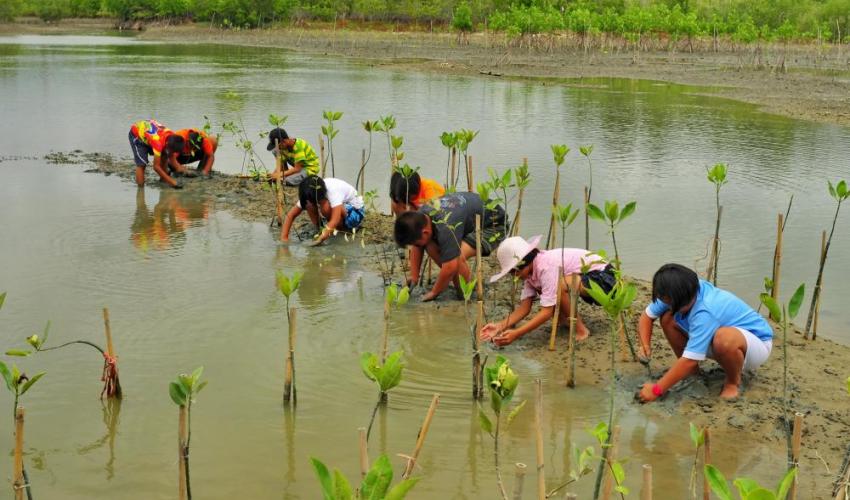Forested slopes can reduce the likelihood of landslides and avalanches, mangroves and sand dunes protect people from coastal storms, flooding and strong winds, and wetlands act as a buffer against floods.
Nature plays a critical role in protecting people from the devastating impacts of disasters and the effects of climate change.
With increasingly frequent and severe natural hazards – and global humanitarian aid budgets that can no longer cover the costs of response and relief – we must be proactive about reducing risks using cost-effective and environmentally friendly options such as ecosystem-based Disaster Risk Reduction (DRR).
Ecosystem-based DRR refers to the conservation, restoration and sustainable use of ecosystems and biodiversity for protecting people, property and livelihoods from disaster risks. For example, healthy coral reefs can protect against storm surges, forested slopes reduce the likelihood of landslides and sand dunes can buffer the impacts of strong winds.
Mangroves have been proven to provide physical protection from coastal storms, flooding and strong winds. The IUCN Asia Regional Office coordinates the Mangroves for the Future (MFF) initiative, established following the 2004 Western Indian Ocean tsunami, to restore mangroves. Indeed, healthy mangrove forests also protect farmland and crops from damage during disasters and this helps a community to rely less on humanitarian aid following a disaster.
Similarly, in drought-prone areas including Burkina Faso and Senegal, IUCN is working with communities to improve the water-holding capacity of soil by supporting the restoration of tree cover through the Ecosystems Protecting Infrastructure and Communities (EPIC) initiative.
It is imperative that environmental managers, engineers, ecologists and humanitarian aid personnel work together to use the cost-effective and mutually beneficial solution that nature offers in reducing the risk of disasters and speeding up post-disaster recovery. Ecosystem-based DRR efforts also contribute towards achieving global climate change targets and at least seven of the 2030 Sustainable Development Goals.
The IUCN World Conservation Congress 2016 is a key gathering of the conservation and sustainable development communities which include influential government, business, science and civil society leaders who can help change the way the world deals with future disasters.











